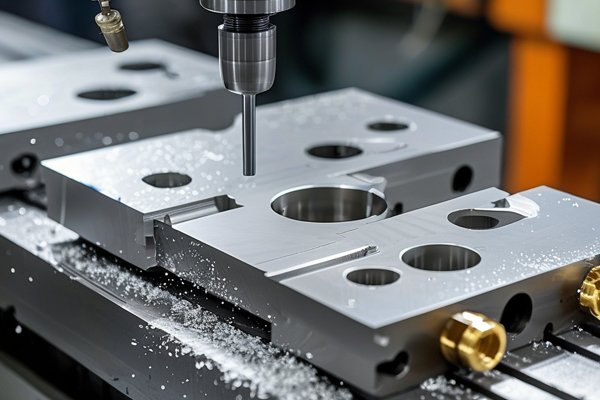*
Did you know that the precision of CNC machining can impact the performance and longevity of aluminum alloy housings? This is no trivial matter; a mere fraction of a millimeter off in dimension can lead to significant issues in product functionality. When it comes to industries like aerospace, automotive, and electronics, where tolerances must be met precisely to ensure safety and operational efficiency, establishing dimensional accuracy in machining processes is critical. In this blog post, we’ll delve deeply into the solutions and best practices required to ensure dimensional accuracy when CNC machining aluminum alloy housings.
—
What is CNC Machining?
Computer Numerical Control (CNC) machining is a subtractive manufacturing process where pre-programmed computer software controls the movement of machinery and tools. It allows for the efficient, automated production of parts with highly precise specifications. Aluminum alloy housings, which are prevalent due to their strength and lightweight properties, can benefit immensely from this technology.
The Significance of Dimensional Accuracy
Dimensional accuracy is fundamental in ensuring that parts fit and function as intended in their application. Inaccuracies can lead to:
—
Key Strategies for Achieving Dimensional Accuracy in CNC Machining
When it comes to CNC machining aluminum housings, the choice of alloy is vital. Commonly used aluminum alloys include 6061, 7075, and 5083, each with different mechanical properties and suitability for specific applications.
Detailed Solutions:
Selecting an appropriate alloy not only ensures dimensional accuracy but also affects the end application. It’s essential to analyze the specific requirements of your project while considering factors like tensile strength, fatigue strength, and corrosion resistance.
Calibration of CNC machines should be a routine practice. Ensuring that your machine is calibrated correctly not only enhances dimensional accuracy but also avoids costly errors during production.
Detailed Solutions:
The choice of tools used in CNC machining has a major impact on the dimensional accuracy of machined parts. Dull or incorrect tools can produce low-precision results.
Detailed Solutions:

Cutting parameters have a direct influence on the dimensional accuracy of CNC machined parts. Parameters include feed rate, cutting speed, depth of cut, and tool path.
Detailed Solutions:
Measurement is an essential step in ensuring dimensional accuracy. Using advanced measurement tools can help verify that machined parts comply with specifications.
Detailed Solutions:
SPC is a quality control method that uses statistical methods to monitor and control a process. This practice can help to identify and reduce variation in machining processes, leading to enhanced dimensional accuracy.
Detailed Solutions:
Proper upkeep and maintenance of CNC machines play a crucial role in maintaining dimensional accuracy. Neglected machines often result in inaccuracies due to mechanical wear.
Detailed Solutions:
—
Achieving dimensional accuracy when CNC machining aluminum alloy housings is not merely a luxury but a necessity, especially in precision-driven industries. By focusing on the selection of the right aluminum alloy, ensuring machine calibration, choosing accurate tooling, controlling cutting parameters, utilizing advanced measurement tools, implementing statistical process control, and conducting regular maintenance, manufacturers can enhance their machining accuracy.
This detailed exploration emphasizes the importance of dimensional accuracy in producing high-quality components that meet stringent industry standards. The effectiveness of your CNC machining processes can significantly impact your bottom line, product reliability, and ultimately, your reputation in the market.
As you ponder over the technologies and practices outlined in this blog, remember that precision is at the core of machining excellence. Investing in these strategies not only fortifies your production quality but sets the stage for innovation and competitiveness in an ever-evolving landscape. If precision machining is a priority for your operations, understanding and implementing these strategies is an undertaking worth your time and effort.






